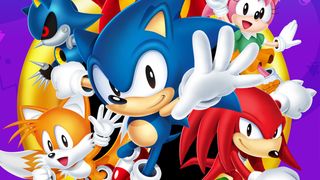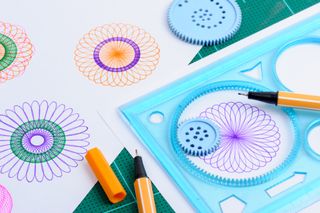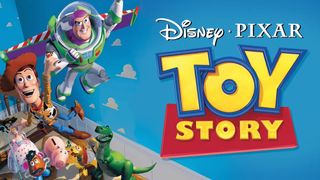Whether you’re gathering graphics on Google Images, identifying ideas on Insta or pulling pictures together on Pinterest, it’s easy to get stuck revisiting the same wells of design inspiration so often that they run dry. One simple way to bring fresh direction to your design research sessions is to look at creative brands celebrating major anniversaries this year. Investigating a source you wouldn’t normally look at will give you new influences to draw upon and help you make unexpected but fruitful connections.
Here are five major design anniversaries being celebrated in 2025, along with suggestions for places to start should you choose to research a movement, brand or product in more detail.
For more creative inspiration, you may also want to look back through history. Our best rebrands of the decade or best typography of the decade are great places to start.
01. Art Deco’s centenary

29 April 1925 saw the opening in Paris of the Exposition Internationale des Arts Décoratifs et Industriels Modernes, a seven-month expo that showcased contemporary design. The ‘Arts Décoratifs’ in the name came to be shorthanded as Art Deco, and a movement was born.
Primarily focused on three-dimensional objects (architecture, interiors, furniture and jewellery) over paintings and posters, Art Deco explored the tension between the efficiency of industrial manufacturing and the human desire for beauty. Designers would explore ways to make items both functional and aesthetic – frequently through the use of premium materials, from exotic woods and mother-of-pearl to manmade chrome and steel. Purely decorative elements like patterns weren’t rejected outright, but they’d often be starkly geometric or minimalist to suggest mechanical efficiency.
Get inspired:
- The Art Deco Society UK is celebrating 100 years of Art Deco in Liverpool this March, with tours of local Art Deco landmarks and a Centenary Ball
- From its futuristic cityscapes to its iconic robot, Fritz Lang’s 1927 classic Metropolis is suffused in Art Deco. It’s available to rent or buy on YouTube
- Adobe has a list of fonts influenced by Art Deco for your next retro design project
02. Sega’s 65th anniversary

Sega was a constant presence in my youth, which was intertwined with the early history of video games. I can still remember the kinetic charge I felt when I saw the first Sonic games on a friend’s MegaDrive – that overwhelming mix of speed and colour.
The company’s roots actually reach back into the slot machine market of the 1940s and 1950s, but Sega became incorporated in 1960; its name is a contraction of ‘Service Games’, one of the firms it bought in its early days. After importing and distributing slot machines, jukeboxes and pinball tables, Sega started to create its own mechanical games, which naturally led it into the nascent videogame industry of the late 1970s. Early hits included Head On and the all-time classic Frogger.
Sega swiftly moved into hardware, manufacturing both arcade machines and home game consoles. After a few early attempts, most notably the Master System, its breakthrough console was the MegaDrive (marketed as the Genesis in the US). Respectable sales on launch exploded when the first Sonic game was bundled with the device.
Subsequent consoles like the Saturn won devoted followings but failed to ignite the mass market, and 1999’s Dreamcast proved to be Sega’s final console before it shifted into developing games for Xbox, PlayStation and PC. You can still relive Sega’s glory days with its MegaDrive/Genesis Mini consoles, which package dozens of classic games in compact versions of its biggest seller – we have reviewed the Mega Drive Mini 2.
Get inspired:
- Dive into the 16-bit aesthetic of a Sega classic in The Sonic The Hedgehog Art & Design Book, published by Cook & Becker
- Play some of Sega’s best games, including the original Sonic, Crazy Taxi and Super Monkey Ball, on your phone. Take a look at the Sega catalogue for iOS or the Sega catalogue for Android
- Sega has distilled its brash pop aesthetic into a new emoji pager for kids
03. Spirograph’s 60th anniversary

With its immediately recognisable geometric patterns, the Spirograph drawing kit is a fond childhood memory for many, but the distinctive look of its graphics still feels futuristic. It’s so compelling to try different combinations of wheels and frames, just to see what comes out once you’ve twirled your pen around a few times.
Spirograph was the invention of British engineer Denys Fisher, who used the proceeds of his firm’s components contracts with NATO to develop his first prototype, with the help of Meccano pieces. He showed Spirograph at 1965’s Nuremburg Toy Fair, and sales took off from there. You can still get the original Spirograph templates (with putty to hold the frames in place, rather than the pins used in early sets) or choose from a variety of extended versions.
After the success of Spirograph, Denys Fisher Toys expanded into other activities for kids and families, including a roster of board games based on 1970s TV series like On The Buses, and its licensed edition of that other classic of childhood creativity, Etch A Sketch.
Get inspired:
- Try the interactive Spirograph at Engaging Data for a quick taste of what’s possible
- Make gear art with Inspiral, an app for iOS and Android
- Check out the Spirograph-based illustrations of Rachel Evans, aka Spirograph Girl, on Instagram
04. Toy Story’s 30th anniversary

Computers had already begun to supplant traditional animation techniques by the mid-1990s: Disney’s The Rescuers Down Under, celebrating its 35th anniversary in 2025, heavily used computers to replicate the cel-based animation look, and 3D software was regularly being used to create animation shorts. But 1995’s Toy Story was produced with a whole new level of ambition altogether, and transformed how animators use computers.
The animation studio Pixar had a freshly minted distribution with Disney, which suggested revisiting Pixar’s fondly remembered short Tin Toy, in which we see a toy come to life and encounter a rather terrifying baby. The logic was that this would help Pixar sidestep the limitations of its RenderMan software, which meant at the time that CG-animated humans typically looked stiff and plasticky – just like toys.
That seed grew into a rich narrative exploring the relationship between children and their playthings, and how to deal with insecurity and jealousy. Toy Story attracted a lot of attention at the time for being the first full-length animated movie, but what really surprised audiences was how quickly they moved past its technical innovations and became captured by the story and its memorable characters. Toy Story proved that computer animation doesn’t have to be soulless.
Get inspired:
- Arguably, Toy Story’s greatest achievement is the marriage of technology and storytelling to engage an audience. Toy Story co-writer (and WALL-E director) Andrew Stanton delivered a masterclass in narrative for TED Talks
- Pixar’s become famous for its use of colour to enhance the narrative, both to set the mood and to establish subtext. Chronicle Books’ The Art of Pixar showcases colour scripts from some of the studio’s most famous productions, including Toy Story
- The need for clever hacks that animators use to pull off certain effects didn’t end with the advent of computer animation
- Discover 8 mind-boggling facts about the making of Toy Story 4
05. Transport for London’s 25th anniversary

Technically, TfL is only the latest in a line of organisations responsible for the UK capital’s public transport since 1933, but this latest incarnation was established in 2000, and has overseen major changes such as the Oyster card and Crossrail (now known as the Elizabeth line).
Managing everything from the Tube and the Overground to buses and a cable car, TfL is a sprawling entity that maintains an admirable respect for its cultural heritage, including Harry Beck’s much-imitated London Underground map, and a commitment to public art. It’s even got its own font.
Get inspired:
- Art on the Underground details the public art you can enjoy in London’s Tube stations, with books and limited-edition prints to buy
- The London Transport Museum’s Gift Shop offers posters and prints, furniture and even original signage
- See 12 of the best London Underground poster designs
